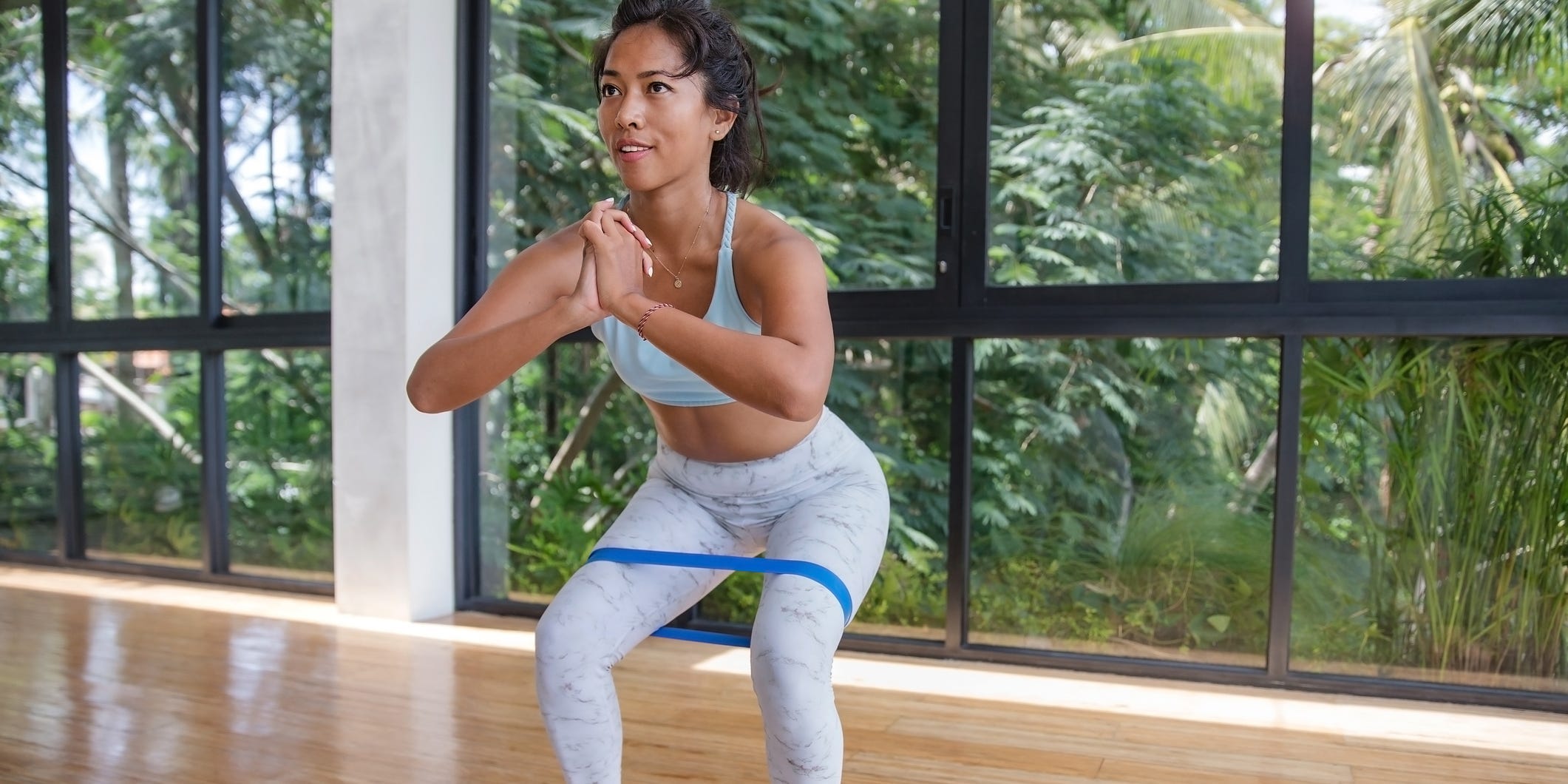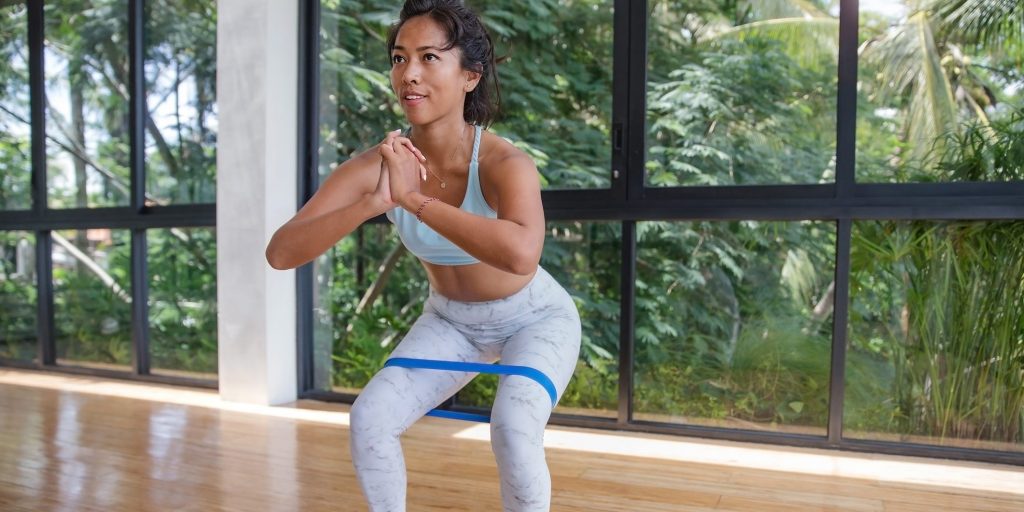
- Hamstring exercises include the deadlift, hamstring curl, Bulgarian split squat.
- To avoid injury, warm up your hamstrings before working out with mobility exercises like toe touches.
- Recovery is key for building strength safely. Take at least 48 hours in between hamstring workouts.
- Visit Insider's Health Reference library for more advice.
Any time you walk, climb stairs, or even sit down in a chair, you're activating your hamstring muscles. Therefore, keeping those muscles strong is important for basic, daily mobility. But that's not all they're good for.
"If you work at a desk job, strong hamstrings will help you keep your spine tall and keep your back from rounding," which can help prevent all-too-common ailments related to poor posture like low back pain, says Keith Hodges, a performance and functional movement coach and founder of Mind in Muscle Coaching. Hamstrings are also important in sports.
Here we identify the hamstring muscles and offer nine exercises to strengthen them. Hodges recommends doing the following exercises two to three times a week (depending on your activity level) with at least 48 hours of rest in between. Keep at it for six to 12 weeks, and you may start to see tone and definition in your thighs, he says.
Hamstring muscles
The hamstrings run down the back of the thigh and are composed of three muscles:
- The biceps femoris is on the back of the thigh, closest to the outside of your body. It helps you bend your knee, extend your thigh at the hip, and rotate your lower leg from side to side when your knee is bent.
- The semimembranosus, located close to the inner thigh, also flexes the knee joint and extends the thigh at the hip, and it allows the hip and lower leg to rotate inward (toward the middle of the body).
- The semitendinosus lies between the other two muscles and provides a similar function as the semimembranosus.
Because the hamstrings support both the knee and the hip, some of these exercises focus on the hips, and others focus on the knees. For exercises with weights, use an amount of weight that fatigues your muscles after about 10 to 12 reps, but not so heavy that you can't complete at least 8 reps.
1. Romanian deadlift
Equipment: barbell, dumbbells, or a band
How to do it:
- If using a barbell, stand with your feet shoulder-width apart, with your shins touching the barbell.
- Bend your knees slightly.
- Drive your hips backward to lower down until you can grab the bar, making sure your back is flat.
- Grab the bar.
- Keeping your arms straight, drive your hips forward and stand up tall, contracting your glutes.
Reps: 8-12
Tempo: 3-1-1 (take 3 seconds to lower, lift for 1 second, and hold at the top for 1 second)
2. Eccentric hamstring slide
Equipment: sliders or none
How to do it:
- Lie on your back on the floor, with your legs bent and your feet flat on the floor.
- If you have sliders, place them on the floor under your heels.
- Place your arms by your sides to assist you if needed.
- Lift up your hips, but make sure you're not compensating by arching your back.
- Slowly extend both legs all the way out, sliding on the sliders.
- Once your legs are fully extended, lower your hips to the ground, pull your feet back in, and repeat.
If you don't have sliders, rework steps 5 and 6 from above to the following:
- Walk your feet out, taking one small step at a time, until your legs are extended.
- When your legs are extended, lower your hips to the ground and return to the starting position.
To make this exercise more challenging, keep your hips lifted rather than lowering them down, and walk your feet back to the starting position.
Reps: 6-12
Tempo: 3-0-3 (3 counts to extend, no time holding that position, and 3 counts to bring your legs back in)
3. Long lever hip lift
Equipment: none
How to do it:
- Start lying on your back, with your arms by your sides.
- Extend your knees by walking your feet out until there is a slight bend in your knees. Positioning your feet this way places more tension on your hamstrings.
- Drive your heels into the ground, lifting up your hips.
- Hold, keeping your back straight.
- If your back starts to arch, shorten the time you hold this position.
Reps: 3 sets
Tempo: Hold for 10 to 30 seconds.
4. Lying leg curl
Equipment: dumbbell or weight machine
How to do it:
- Lie on your stomach, on either a bench or the floor. Have the dumbbell on the floor near where your feet are.
- Place each foot on either side of the dumbbell and then orient it so that it's resting vertically between them.
- Still holding the dumbbell between your feet, lift them up to 90 degrees.
- Lower your feet, extending your knees until the dumbbell touches the floor or as far as possible.
Reps: 8-15
Tempo: 3-1-1 (3 to lower, 1 to hold at the bottom, 1 to lift, then repeat)
5. Hamstring curl
Equipment: stability ball
How to do it:
- Lie on your back, with your arms by your sides to assist you if needed.
- Place both feet on the ball. Knees can be slightly bent if you can't fully extend.
- Press your arms down into the ground and lift your hips up.
- Drive your heels into the ball and roll the ball toward your butt.
- As you curl the ball toward you, keep your hips elevated.
- Once you've curled the ball toward you as far as you can, brace your core and roll the ball away, extending your legs until they are straight again.
- Try to keep your hips from touching the ground in between reps. But if your form is slipping and you start to arch your back, lower your hips and reset, aligning your hips and your ribs, and start again, Hodges says.
Reps: 6-15
Tempo: 2-1-1 (2 seconds to extend your legs, 1 second hold, and 1 second curl)
6. Traditional deadlift
Equipment: barbell or dumbbells
How to do it:
- Start standing with your feet shoulder-width apart.
- Bend your knees and squat down until you can grip the barbell or dumbbells. Keep your back straight, core tight, and don't bend too far over.
- With your hands in front of your legs, grip the bar or barbells.
- Press into the floor with your feet to extend your hips into a standing position, keeping your arms straight.
- Lower the weight and repeat.
Reps: 8-12
Tempo: 0-1-3 (starting from the lower portion of the movement, lift the weight and hold for 1 second, lower for 3 seconds, then repeat)
7. Good morning
Equipment: dumbbell, medicine ball, or none
How to do it:
- Stand with your feet shoulder-width apart.
- Cross your arms across your chest. If you are using a dumbbell or medicine ball, hold it against your chest.
- Bend your knees slightly.
- Hinge at your hips, driving your hips back as if you're going to push a door closed with your glutes.
- Lower your torso so that it's parallel to the ground, your back is flat, and you are looking down at the ground between your feet.
- Drive your hips forward, coming back up to the starting position.
Reps: 6-12 reps
Tempo: 4-0-0 (4 seconds for the lowering phase, explode up quickly, and then repeat)
8. Bulgarian split squat
Equipment: bench
How to do it:
- Start standing, with the back of your legs against the bench.
- Take one or two steps forward.
- Lift one leg behind you, resting your foot at the top of the bench.
- Look forward with both arms by your sides.
- With your hips and ribs aligned, back straight, and chest upright, lower your body down toward the ground as far as you can. But make sure you maintain a forward lean to incorporate your glutes and hamstrings more. You may be able to touch the knee of the elevated leg to the floor.
- Keeping your back straight, press into your front foot to stand back up.
Reps: 15-20 (If you want to add weight, do 6-12 reps.)
Tempo: 3-1-0 (lower for 3, explode up, and start again)
9. Stationary split squat
Equipment: none
How to do it:
- Start standing.
- Take a step back with one foot, as if you have a puddle of water between your feet.
- With your front foot flat, slightly bend that lead leg and lean forward to place your center of mass on your lead leg. Keep your back heel elevated and leg fully extended if possible.
- Lower down until your back knee is an inch or two above the ground. Make sure the shin of your lead leg is vertical.
- Push into the ground through your lead leg to stand up, back to the starting position. Make sure you keep your hips and ribs aligned to protect your back.
Reps: 6-12
Tempo: 3-1-0 (3 seconds to lower, 1 to hold, and immediately go back up)
Insider's takeaway
Hamstrings are essential for many types of movement, from everyday motions around the house to explosive athletic movements.
Strengthening your hamstrings with these exercises can help you avoid injury and improve posture.
However, Hodges says, good form is important. "Don't be afraid to ask a professional for help to make sure your technique is correct," he says.
Don't forget that recovery is key, Hodges says. He recommends taking at least 48 hours of rest between hamstring workouts.
